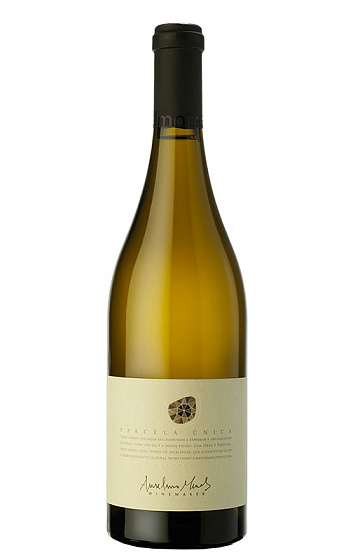Parcela Única Alvarinho 2015
Descripción
Vino blanco de Albariño procedente de un único viñedo que produce uvas de esta variedad en su versión más pura y original. Una apología de la elegancia y la complejidad que tras una crianza de nueve meses en barricas de roble francés llega a tu mesa para sorprenderte con el poder de esta uva. Un blanco gastronómico, mineral y muy equilibrado. Recuerda a la manzana, la pera y la pimienta blanca. Fino como la seda.
Ficha técnica
Cata
Viñedo y elaboración
Opinión de los críticos
"The 2015 Parcela Única is an Alvarinho aged for nine months in light-toast French oak. It comes in at 13% alcohol. This could be that moment in a great winery's life when everything comes together, with a great vintage, a top bottling and great execution. This is showing its oak a bit more than on opening than some oaked wines in the region do, but it pulls it in well and quickly, too. Even now, it doesn't seem creamy or laced with vanilla flavors, and the longer it is open, the better it controls the wood. It is just full-bodied and mouth-coating, caressing and sensual in texture. Exceptional on all levels, it shows fine acidity, too, with the freshness of the wine easily cutting through its wood. It is that freshness that elevates this to a different level. There is always plenty of tension as this airs and warms. It demonstrates quite a bit of zip and tension for an oaked Alvarinho. (Don't drink it too cold.) By the second day, the wood is fading fast. It becomes easy to drink on its own, unlike a lot of oaked whites, but it still has plenty of stuffing to hold up to food. (It is probably best used as a food wine.) By the fourth day, it is even more brilliant, fresh, clean, amazingly persistent and generally remarkable. I wasn't even thinking of wood any more. The fruit and acidity obliterated it. This is simply quite brilliant. If it holds true to form, it should age very well, too. In fact, another year or two in the cellar might actually improve it. Let's take that aging curve in stages, although I won't be surprised if I'm underestimating that. It does need to age well to justify my enthusiasm, but they usually do. Finally, look at the price. As I discussed at length in the August 2016 Issue 226 report—Portugal: Vinho Verde - Can Young (& New) Guns Win the Day?—price points in this region can be terribly deceptive. This seems like a king's ransom for a Vinho Verde. For a terrific white wine, it's dirt cheap". - Mark Squires.









Añadas: 2021 2020 2019 2015
Esta añada no tiene valoraciones todavía. Pincha en las otras añadas para ver sus valoraciones.
Decepcionante...
No esta mal pero esperaba mas por el precio que tiene